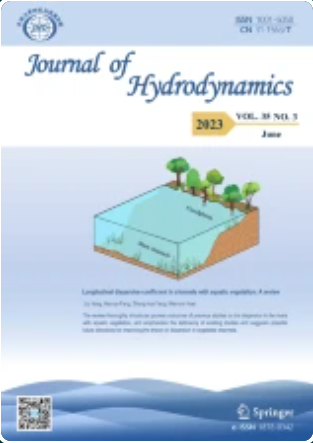Vortex-induced vibration response of dual-step cylinders with varied coverage
Abstract
Vortex-induced vibration (VIV) of a dual-step cylinder with a diameter ratio of (D / d = 2) at different coverage ratios (R = 0%–100%) are experimentally investigated at Reynolds number (Re = 490–3 750). The general vibration responses of the dual-step cylinder at different coverage ratios can be classified into three categories based on the dominance of the small or large cylinder section: (1) Dominated by small cylinder (R = 4%), where the response and forces show a similar trend to that of a uniform small cylinder. The vortex shedding frequency and the drag frequency lock-in at the lower branch. (2) Transitional stage (R = 12.5%–25%), where competition between the large and small cylinder sections exists. The vibration responses show two “lock-in” regions in the transition branch and the lower branch. The lift and drag coefficients are double-peaked. (3) Dominated by the large cylinder (R = 50%–75%), where the initial branch of the response disappears, as replaced by the transition branch. The vibration frequency is still featured by two “lock-in” regions while the drag coefficient returns to the single-peak pattern, similar to that of the uniform large cylinder. The effective added mass significantly influences the vibration responses of the dual-step cylinder and it varies with the reduced velocity. A unified lock-in region is identified where the dimensionless vibration frequency consistently equals the unity, indicating a synchronization between the vibration frequency and the real natural frequency.

 求助内容:
求助内容: 应助结果提醒方式:
应助结果提醒方式:


